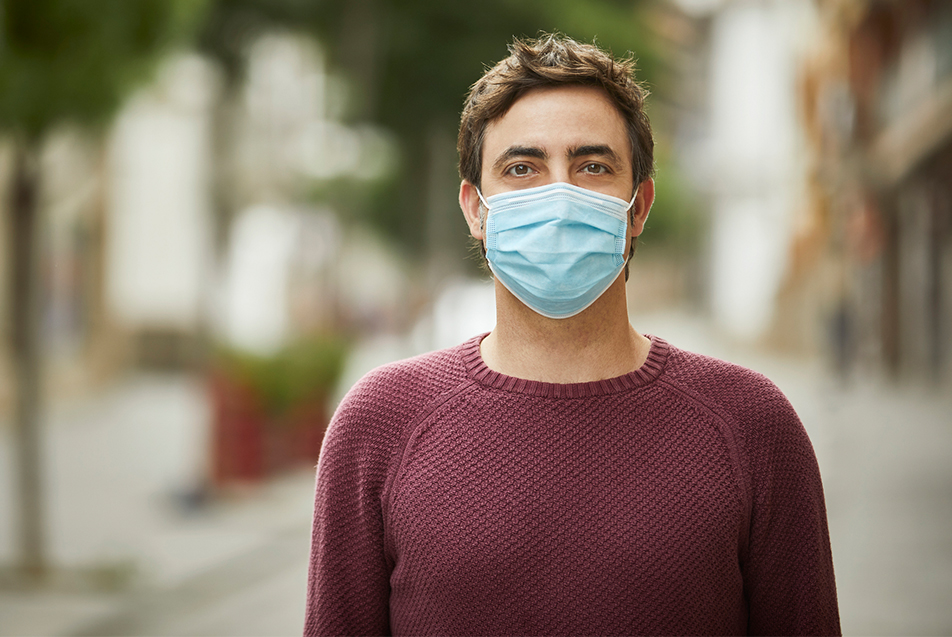
This post was written by Melinda Kanter, BSN, RN, CIC, infection preventionist, Parkview Noble Hospital and Parkview LaGrange Hospital.
The mask covering your nose and mouth helps prevent the person-to-person spread of COVID-19 through droplets that are produced whenever an infected person coughs, sneezes, talks or raises their voice (e.g. while shouting or singing). These droplets may hang in the air for several minutes and may land in the mouths, noses or be inhaled into the lungs of people who are nearby. The Centers for Disease Control and Prevention (CDC) reports that a significant number of people who have COVID-19 don’t exhibit any symptoms of the virus, though they are just as able to infect someone else through the droplets they expel. Even if you don’t have any symptoms of the virus, you could still be carrying COVID-19 and unknowingly spreading the virus.
For this reason, and barring any health conditions that preclude it, the CDC recommends wearing a cloth mask whenever you anticipate being with people that don’t live with you, especially if there is a chance you won’t be able to maintain a social distance of at least six feet between yourself and others. Wearing a mask helps protect the people around you, including those who are at a higher risk of severe illness from COVID-19 and workers who frequently come into close contact with other people (e.g. in stores and restaurants).
Those who should NOT use a cloth mask or face covering include children under 2 years old, anyone who has trouble breathing, is unconscious, incapacitated or otherwise unable to remove the mask without assistance.
How long is it safe for me to wear a mask?
The CDC recommends you wear the mask continuously from the time you leave home until the time you return and encourage you to clean your hands thoroughly before you put on your mask and after taking it off.
The length of time you can wear your cloth mask is influenced, in part, by its condition. Be aware that your mask loses its effectiveness when it becomes damp or wet. Dampness may begin building up in the mask, making it harder and harder to breathe through the material. Moisture build-up in a mask may come from several causes:
- Singing, shouting or speaking loudly expels more moisture into the mask
- Prolonged time spent outside when it is hot and humid
- Pulling your newly washed mask from the dryer before it is thoroughly dry
- Cardio exercises that cause you to perspire behind your mask
- Being caught in a sudden rain shower
What if my mask becomes too damp?
It may not be realistic to wear the same cloth mask all day for many reasons. Carry a sealed baggy containing a clean back-up mask with you for those times when your initial mask isn’t effective anymore. Wash your hands or use hand sanitizer before removing your first mask and again before you put on your back-up mask. This extra mask is also handy for spontaneous gatherings with friends or others where socially distancing isn’t possible. If you don't have another mask with you, use social distancing, move outside to continue a conversation or consider returning home.
Be sure to wash both of your masks after you get home so they will be ready for you whenever you need them.
